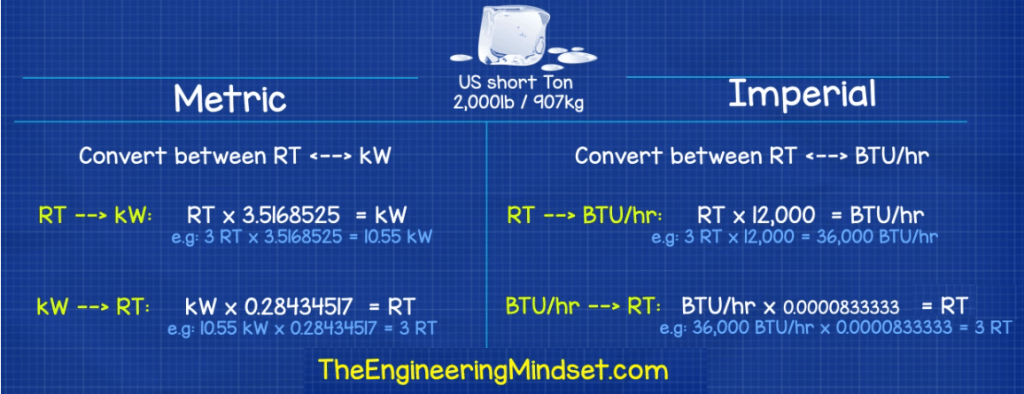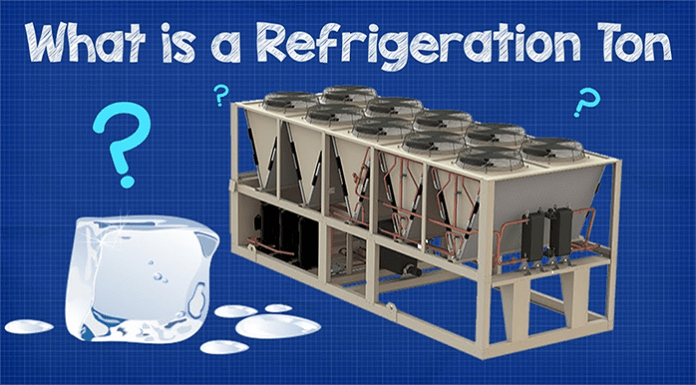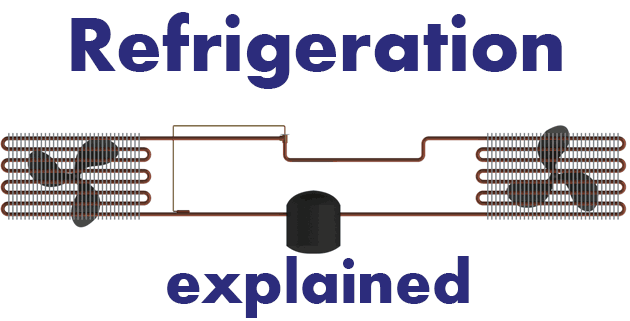Refrigeration Ton. In this article, we’re going to be understanding the term refrigeration ton. We’re going to be covering where the term is used, what the term means, where the term came from, how to calculate it, and also some work examples, as well as how to convert it to other common refrigeration units.
Scroll to the bottom to watch the YouTube tutorial on Refrigeration Ton’s explained
The term refrigeration ton is commonly used, and mostly used, in North America. It’s a unit of measurement for the cooling capacity of a refrigeration machine. It has a few variants, and it’s sometimes called a ton of refrigeration or just RT for short.
The term refrigeration ton is a little bit confusing to many people. It has nothing to do with the weight of the machine. It only relates to the amount of cooling that the machine can produce.
The term used to be used in many other countries, but the majority of the world has switched over to SI metric units of kilowatts of cooling. However, some people and manufacturers will still refer to equipment rated in refrigeration tons.
If you’re outside North America and have some older refrigeration equipment on site, then this will likely be noted in refrigeration tons. If you’re working in North America then you’ll often see large refrigeration plants, such as chillers, referred to in refrigeration tons. Whereas smaller units are typically rated in BTUs.
If you’d like to learn how chillers work, air conditioning units or heat pumps, then follow the links.
The term refrigeration ton came about in the late 1800’s. This is when blocks of ice were used in air handling units to provide cooling. They would literally order blocks of ice by the ton. This would then sit directly in the flow of the warmer supply air, which melted it and carried the cold air away into the building. So a ton of ice would provide a ton of cooling, and the equivalent amount of cooling later became available through vapor compression refrigeration machines.
So a ton of refrigeration is how much heat needs to be removed from a ton of water (US short ton) to turn it into ice within 24 hours. This is only for the latent heat, so the water would need to be at zero degrees Celsius, 32 degrees Fahrenheit, and the ice would then also still be at zero degrees Celsius, 32 degrees Fahrenheit.
This is only the energy to cause a phase change of the water to turn it from a liquid into a solid. (From water into ice). If the water was at room temperature, then you would need to remove more heat to bring it down to zero degrees Celsius, 32 degrees Fahrenheit, before it can be turned into ice.
Example calculation
Let’s look at some calculations for this in the modern units for both metric and imperial. So a short ton is equal to 907.18 kilograms or 2,000 pounds. The latent heat of fusion for ice is 334 kilo joules per kilogram or 144 BTU’s per pound. So to calculate the latent heat cooling load, just multiply the respective units together.
To convert this weight of water into ice within 24 hours, on the metric side, you’re going to need to extract 303,000 kilo joules or in BTUs, 288,000.
Metric: 907.18 kg x 334 kJ/kg = 303,000 kJ
Imperial: 2,000 lb x 144 BTU/lb = 288,000 BTU’s
To find our hourly rate of cooling, we just need to divide this number by 24 hours. So in the
Metric: 303,000 kJ divided by 24 hours equals 12,625 kJ per hour.
Imperial: 288,000 BTU’s divided by 24 hours will give us 12,000 BTU’s per hour.
Now for the metric units, since kilowatts is a rating of power based on joules per second, we need to divide 12,625 kJ by how many seconds there are in an hour. So if there’s 60 minutes in an hour, multiply by 60 seconds per minute. That will give us 3,600 second per hour. So if we divide 12,625 kJ by 3,600 seconds per hour, then that gives 3.51 kilowatts.

In the image above you can see example calculations for how to convert between different, common, refrigeration units.






















very good information thanks
Thank you for very interesting information. I appreciate that
Thank You very much for the informative article.
[…] BTU, or British Thermal Units, measures the amount of heating your home needs. Tonnage is the measurement for cooling. […]
We often do not pay attention to the small things in our life so we do not understand these things. But after reading your article, this demonstrates your knowledge of the You’ve made my day.
[…] term refrigeration ton is commonly used, and mostly used, in North America. It’s a unit of measurement for the cooling […]